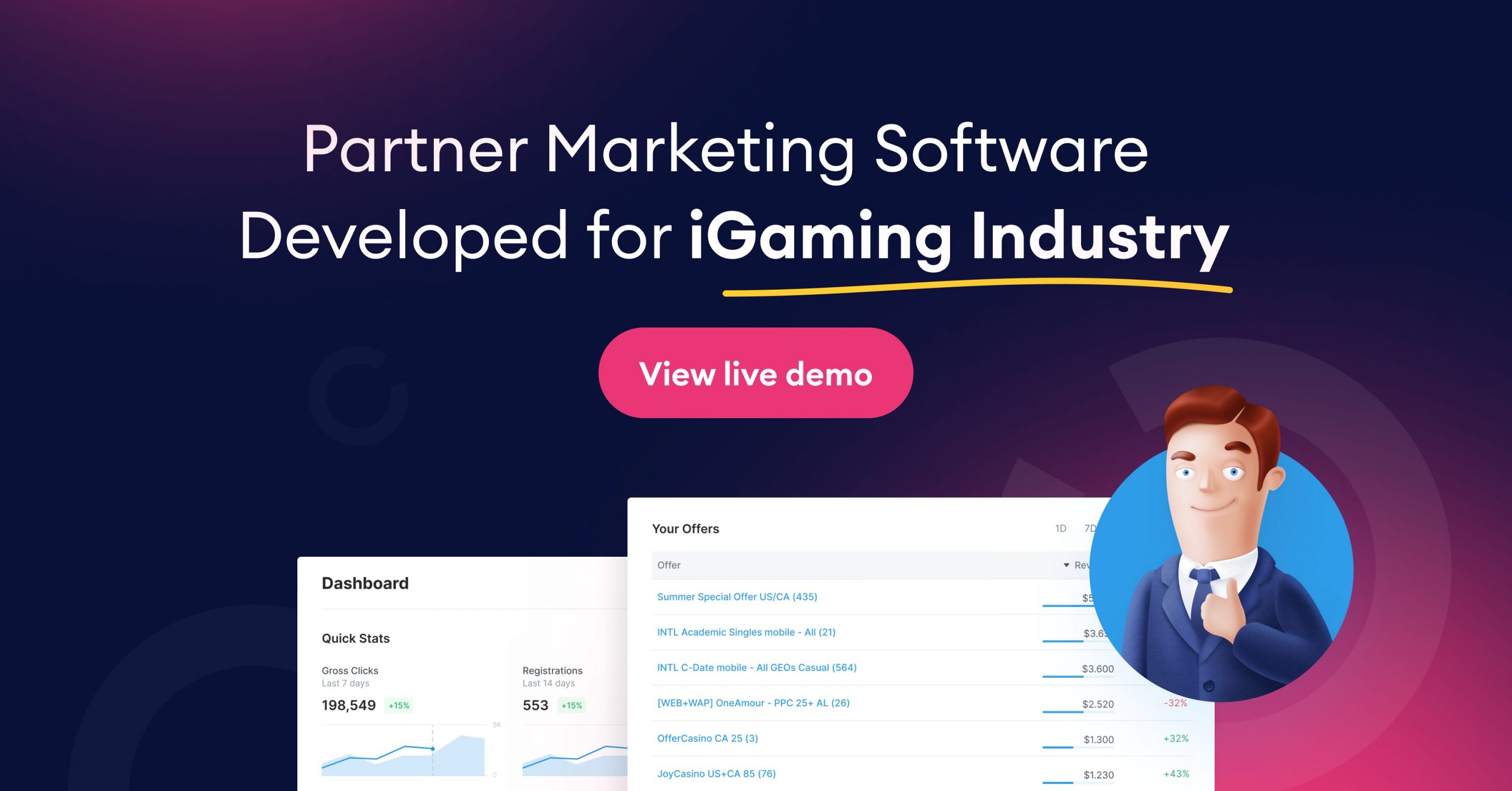RevShare model, which is an abbreviation for “revenue share” in the casino and iGaming industry. It is a partnership where the casino operator repeatedly pays a percentage of their revenue to the partner for every client they have referred.
The percentage of revenue shared is typically agreed upon in advance, in a so-called revenue sharing agreement. It can be based on various factors, such as the number of players referred or the amount of revenue generated by those players. The partner typically receives a share of the total revenue monthly or quarterly.
Online casinos and other iGaming companies often use this lucrative model to expand their reach and acquire new customers.
Today, we will look at the advantages and disadvantages of this technique, so you can better understand if this will suit your business or not.
If you are an affiliate looking to join revshare programs, understanding the potential advantages of the revenue sharing model is crucial to making an informed decision about which model is right for you.
The revenue share model offers several advantages for partners (affiliates), including:
High earnings potential
Affiliates can earn significantly more money by promoting a casino or iGaming company. The revenue share model allows affiliates to earn a percentage of the total revenue generated by the players they refer, which can result in long-term and potentially high earnings (as opposed to a one-time CPA commission).
Passive income
Once the referral is made and the player is active, the affiliate will earn a share of the casino’s revenue generated by the player, allowing for a form of passive income. That means even if the partner stops promoting his affiliate offers at some point, he can continue to benefit from recurring commissions.
Scalability
As the affiliate refers more players, the potential earning increases, allowing for a scalable business model. This means he can benefit from a passive income and multiple layers of commissions, as all his active referred clients will be making deposits.
As you can see, this model is very lucrative for partners because they can enjoy an evergreen and ever-increasing income stream, but what about the advertisers (casino owners)?
Why would it pay out to run a rev-share model and pay a share of all earnings to the partner instead just paying once?
Let’s break down the advantages for the affiliate program owner.

Motivation for affiliates
With a revenue share model, affiliates are motivated to drive high-quality traffic and maximize the revenue generated, as their income is directly tied to the performance of the players they refer.
Low-cost customer acquisition
Affiliate RevShare marketing can be a cost-effective way for a casino or iGaming company to acquire new customers. By paying a percentage of revenue to affiliates for referring players, the company can acquire new customers at a lower cost than other advertising forms.
Increased reach and brand awareness
Since this is a very lucrative payout model, affiliates can promote a company’s products or services to a wider audience, increasing the company’s reach and brand awareness.
Risk reduction
The revenue share model allows the program owner to reduce risks, as the affiliates are responsible for their own marketing efforts, and the company only pays for results.
Flexibility
With a revenue share model, the business owner can adjust the commission structure as needed, making it easier to respond to market changes or the affiliates’ performance.
No upfront costs
The program owner doesn’t need to spend any money on advertising or marketing, as the affiliates will do the work and are paid only for results. By paying a percentage of the revenue generated by the players, the business owner only pays for successful conversions, making it a more cost-effective way to acquire new customers.
On the other hand, with the CPA model, the affiliate is paid a flat fee for each successful conversion, which may not align with the program’s long-term success.
The CPA model may not provide the same level of motivation for affiliates, as they are only paid once per conversion, and there may be a lower incentive to retain the players they bring in.
Of course, the revenue-sharing model has become increasingly popular in the affiliate marketing industry. However, although this payout model can offer several advantages, it also has disadvantages.
Now, we will take a closer look at some of the drawbacks of the revenue sharing model and how they can impact both affiliate program owners and affiliates.
From lack of control to increased fraud rates, we’ll discuss how these cons can affect the overall performance of the revenue sharing program and the revenue generated.

Whether you’re an affiliate program owner or an affiliate looking to join a program, understanding the potential downsides of the revenue-sharing model is crucial to making an informed decision about which model is right for you.
- Unpredictable income: Affiliates may not always know how much they will earn, as the revenue share percentages may fluctuate based on the performance of the players they refer.
- Limited control over marketing efforts: As affiliates are independent entities, the program owner has limited control over the marketing efforts and strategies used by affiliates, which could lead to less consistency in terms of brand messaging and customer acquisition.
- High competition: Affiliates may face high competition from other affiliates promoting similar products or services.
- Spamming: Motivated by potentially high earnings, affiliates may also use spam or misleading methods to drive traffic to the merchant, resulting in low-quality leads and high fraud rates.
Maximizing the return on investment (ROI) using the RevShare model in affiliate marketing requires a strategic approach focusing on several key factors. From the affiliate program owner’s perspective, several strategies can be used to maximize your revenue when using the RevShare model.
Select high-performing affiliates
Carefully selecting affiliates with a proven track record of driving high-quality traffic and conversions can help ensure that the program generates maximum revenue and is a win-win for everyone.
Offer competitive commissions
Offering competitive commission rates can help attract and retain high-performing affiliates and incentivize affiliates to promote your casino.
Offer incentives
Offering incentives, such as bonuses or higher commission rates when the partner refers X number of new clients, can help motivate affiliates to perform at their best. Offering incentives for affiliates who generate a high volume of referrals or reach certain performance milestones, helping to motivate further and reward your best partners.
Use top-notch affiliate software
Another effective strategy is to provide your affiliates with detailed tracking and reporting tools to monitor their performance and optimize their promotions. Regularly monitoring and tracking the results generated by affiliates can help identify areas for improvement and make adjustments as needed.
By implementing these strategies and continuously refining and optimizing your program, you can maximize the revenue generated by your affiliate program.
As a casino owner with an affiliate program, choosing between a CPA (Cost-Per-Action) model and a Revenue Share (RevShare) model will depend on several factors, including your goals, target audience, and the characteristics of your iGaming business.
| Criteria | RevShare (Revenue Sharing) | CPA (Cost Per Acquisition) |
|---|---|---|
| Definition | An agreement where the affiliate earns a percentage of the revenue generated from the traffic they send. | A model where the affiliate earns a fixed amount for every conversion/action (like a sale, sign-up, etc.) they drive through their traffic. |
| Payout Structure | Percentage-based. Affiliates earn a fraction of the total revenue generated. | Flat rate. Affiliates earn a predetermined amount per specific action. |
| Risk for Merchants/Advertisers | Lower risk since they only pay when actual revenue is generated. | Higher risk as they pay for the acquisition regardless of the lifetime value of the customer. |
| Risk for Affiliates | Higher risk. If the product doesn’t sell well, earnings can be minimal. Also, reliant on customer’s lifetime value. | Lower risk. Affiliates are assured of a specific amount per conversion, regardless of the customer’s actions post-acquisition. |
| Earning Potential | Potentially limitless. If customers spend more or continue to buy, affiliates earn more over time. | Limited to the set commission per action. No further earnings from that particular customer’s actions post-acquisition. |
| Longevity | Can offer long-term earnings especially if it involves recurring subscriptions or if the customer makes multiple purchases. | One-off. Affiliates get paid once for the acquisition and that’s it. |
| Suitability | Best for products/services with potential for repeat purchases or high lifetime value (like subscription services). | Best for one-time purchases or when the aim is to just get the customer in the door (like software trials, sign-ups). |
| Transparency | Requires more tracking and transparency to ensure the affiliate is paid correctly for all revenues generated by their referrals. | Easier to track as it’s tied to a specific, singular action. |
| Trust Factor | Requires a high level of trust between the affiliate and the merchant. Affiliates must believe in the product’s value to customers. | Less trust required as affiliates are not banking on the lifetime value of the customer. |
| Ease of Prediction | Harder for affiliates to predict earnings as it’s dependent on customer behavior post-acquisition. | Easier to predict earnings based on historical conversion rates. |
| Cash Flow | Can be slower, especially if based on monthly/annual subscriptions. | Typically faster, as affiliates get paid soon after the action is completed. |
Both models have their merits. The best choice often depends on the specific product/service, the goals of the affiliate program, and the preferences of the affiliate.
A CPA model may be the better option if you want to acquire new customers quickly and cost-effectively. With a CPA model, affiliates receive a flat fee for each new player they refer, providing you with a clear return on investment for each acquisition.
On the other hand, a RevShare model may be the better choice if you want to build a long-term relationship with your affiliates and drive recurring revenue.
In this case, affiliates are motivated to maximize the revenue generated by the players, and they may be more likely to engage in retention and loyalty efforts, helping to increase the lifetime value of the players.
Ultimately, the choice between a CPA and Revenue Share model will depend on your specific goals and financial allocation (are you willing to cut a share of all your future deposits?)
Ideally, you may offer both options and allow affiliates to choose the model that best aligns with their goals and strategy.
Conclusion
The revenue share casino model in affiliate marketing, just like other profit-sharing plans, is a performance-based model where the affiliate program owner pays a percentage of the revenue generated by the players referred by the affiliates. This model can offer several advantages for the affiliate program owner and the affiliates.
- For the business owner, it can be a cost-effective way to acquire new customers, increase sales and revenue, access valuable data and scale their marketing efforts quickly.
- For the end affiliates, it can provide a steady stream of income and the ability to earn more by referring more players.
To maximize revenue using the revenue sharing model, affiliate program owners should carefully select high-performing affiliates, communicate clear guidelines and expectations, offer competitive commissions, monitor and track results, offer incentives, and continuously optimize the program.
Looking for affiliate software that was developed for the iGaming industry and offers both CPA and RevShare models for affiliate partners?
Try Scaleo – our software was designed and optimized to meet the needs of the iGaming affiliate program. First 14 days free, no credit card required!

Revenue Sharing vs Profit Sharing – What’s The Difference?
Revenue sharing and profit sharing are two ways companies distribute rewards to employees. Revenue sharing involves sharing a portion of total revenue with employees based on sales or overall revenue generated. Profit sharing, on the other hand, distributes a percentage of profits after deducting expenses. Revenue sharing focuses on sales performance, while profit sharing considers both revenue and costs. Both methods have pros and cons. Revenue sharing directly links compensation to sales but may not align with profitability. Profit sharing provides a more accurate measure of financial health but may not incentivize sales. Understanding these differences helps businesses choose the right approach for motivating employees.
RevShare model refers to the marketing model most often employed by online casinos, where the iGaming operator is “sharing” a part of the revenue that the affiliate brought in to the casino. It means a percentage of their referred person’s losses goes to the affiliate.
RevShare marketing refers to online iGaming websites that offer shared revenue model to their affiliates. Promoting such offers means one is engaging in RevShare marketing.
RevShare and CPA are not the same thing, even though both are commission-based affiliate models. In RevShare the casino is sharing a portion of the revenue that the affiliate brought in, while in CPA there is a fixed “cost per action” where the affiliate receives a fixed commission regardless of the amount the referred person lost into the casino. Both models are often used in the igaming sector.
Last Updated on January 19, 2024






